What is the Virtonomics business simulation and what can you do here?
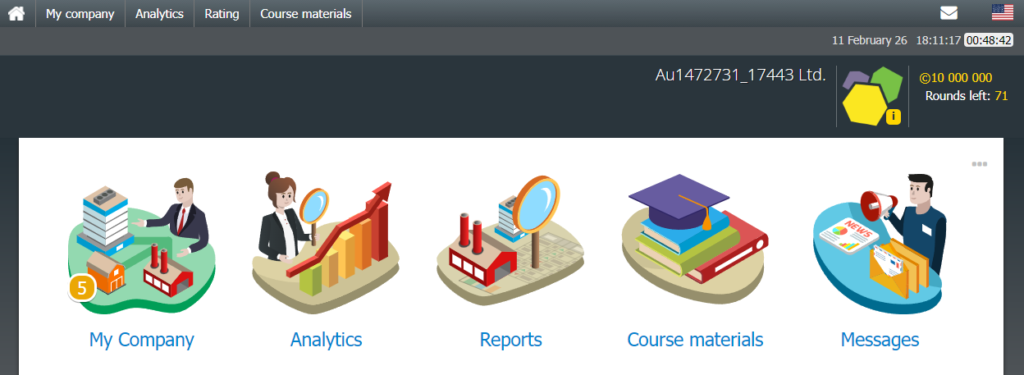
Virtonomics is a turn-based multiplayer business game and realistic, detailed business simulation in which you manage your company, grow your virtual business, and compete with a variety of real and virtual competitors.
Your goal in Virtonomics and the gameplay options available to you depend on the game scenario you play. The game scenario and, accordingly, your goals and capabilities in the business simulation are determined by the Game Organizer (Game Master).
In the virtual economic space of Virtonomics, you manage your own business, competing with many competitors. Your company, depending on the game scenario, may include a variety of divisions – mining enterprises, factories, shops, restaurants, research centers, and much more. During the game, you can create and manage a variety of business units and try to grow your business in any industry and market.
In each division of your virtual company, you manage all key business processes and functions: HR, production, marketing, sales, logistics, strategic management, finance, purchasing, etc.
The model of economic and market behavior in the simulator is based on the most advanced methods of stochastic modeling using big data on the results of the actions of hundreds of thousands of players. The behavior of the virtual economy and the dynamics of industries and markets in our simulation are shaped and changed as a result of the actions and behavior of many players who build their virtual businesses and interact with each other. This economic model is as realistic as possible and close to the behavior of markets in real life.
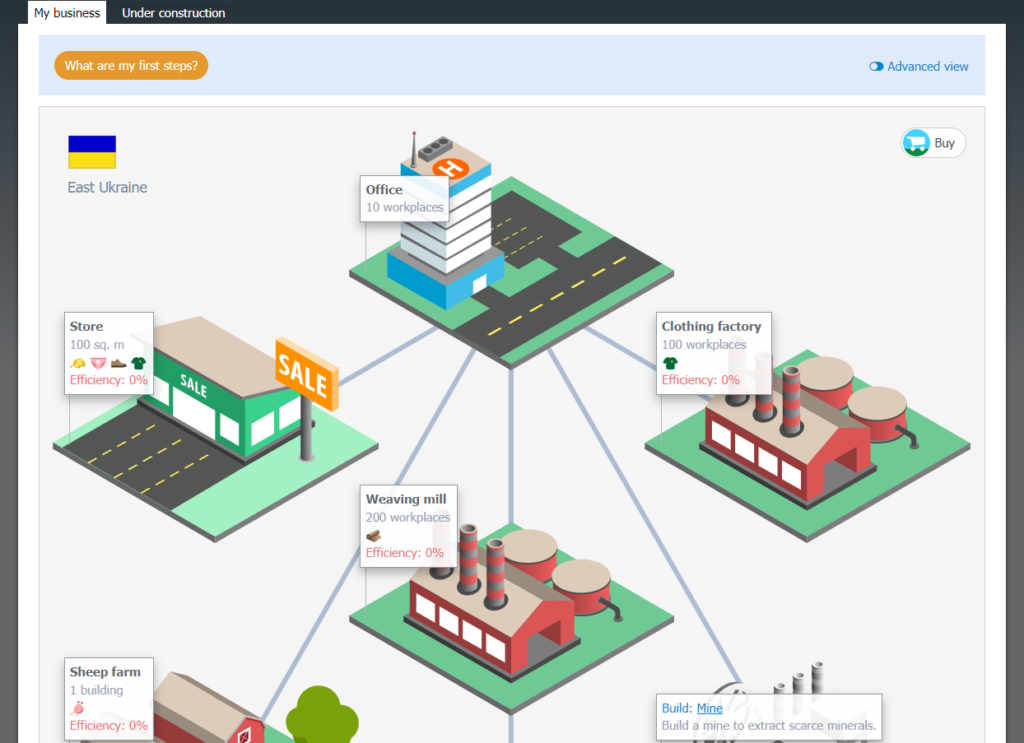
What is a turn-based business game?
Virtonomics Business Challenge is a turn-based business simulation game with a specific scenario, game goals, and a certain number of rounds.
- Each round lasts a fixed amount of time: 1 hour in INTENSIVE mode, and 1 day in CLASSIC mode.
- The number of rounds, and start and finish times of each Game are set by the Game Organizer (Game Master). This data is always present on the Game Event Landing Page.
- During each round, the player makes and implements the entire range of management decisions aimed at developing his virtual business, by the chosen game scenario.
- At the end of each round, the game situation is updated, during which the game server calculates the results of all actions and transactions that occurred in the virtual world during this round. The calculation of changes in the game situation after each round begins simultaneously for all players, and lasts 3-10 minutes in INTENSIVE mode, and 30-90 minutes in CLASSIC mode.
- After the calculation is completed and the game situation is updated, a new round of the game begins, in which you will be able to see the results and consequences of all your management decisions in the previous round, make new decisions, and make new transactions.
- During one game round, one virtual week passes in the virtual gaming space.
- Each round starts and ends at the same time for all players.
- In the upper right corner, you can see a counter of the time remaining until the end of the current round.
Game duration:
The duration of the game and, accordingly, the number of rounds are set by the Game Organizer (Game Master). To organize games, two business simulation intensity modes are available:
- In Intensive Mode, each round of play is 1 hour long, and 4-8 hours is recommended for intensive play. This mode is more suitable for short one-day events that require complete immersion of participants and gameplay for this time.
- In Classic Mode, each round lasts 1 day, and for playing in this quiet mode, a total game duration of 10-15 rounds is recommended, depending on the goals of the game. This mode is optimal for playing parallel to the educational or work process of participants and for geographically distributed groups. This game mode allows participants to enter the game at any time convenient for them, regardless of their time zone, and at the same time participate in a single group game synchronized with other participants.
Tips for players:
What to do first
- Analyze the markets in which your company operates. Identify those goods and raw materials that have the greatest sales prospects. Focus on these products.
- Find a promising market for your company based on market size, level of competition, and other indicators. Don’t forget to open the office first. Without it, as a management structure in the region, no other unit can function.
- Make purchases of promising goods (raw materials). Take into account factors such as the location of the division, the average price, quality, and brand of products in this market, and the sales volume of competitors.
- Set selling prices for your products.
- Check that all your departments are provided with personnel, production equipment, and contracts for the purchase of components or goods.
- Try to complete most of the starting tasks.
What to do after the first turns?
- Check the efficiency of all your subdivisions on the homepage.
- Take advantage of the in-game hints.
- Look at the company financial reports — that way you can see which subdivisions of your company are more profitable.
- Check the sales volumes in the trade hall and the warehouse of your factory are all products selling out? How many units were ordered and how many were sold? Experiment with prices if necessary.
- Improve the sales and leftover stock supplies. Bear in mind that there is no point in investing in products that are not selling out.
- Launch an advertising campaign. Try various advertising channels and budgets. Increase the efficiency of the advertising campaign.
- Expand your business — optimize the processes in existing subdivisions or open new ones.
Boosters and innovations
Economic game Virtonomics has the function, can accelerating certain business indicators using business boosters, like opening parking spaces, launching ERP business management systems, integrating quality control, increasing energy efficiency, etc. Every business booster has its price, service costs, and validity.
Boosters for stores:
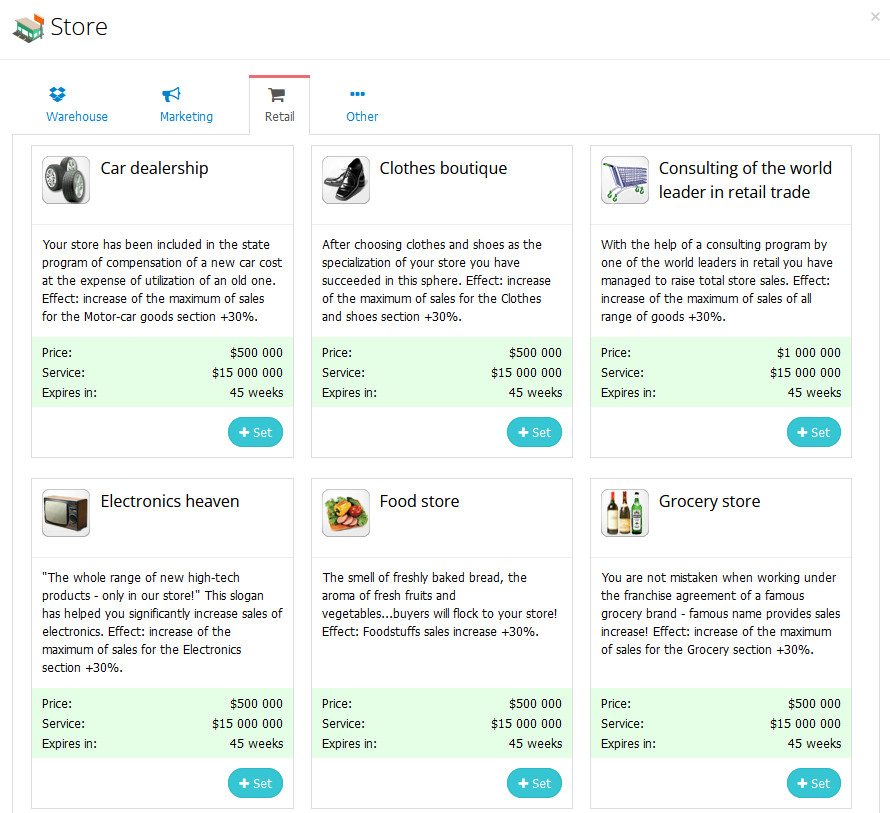
Innovations for factories:
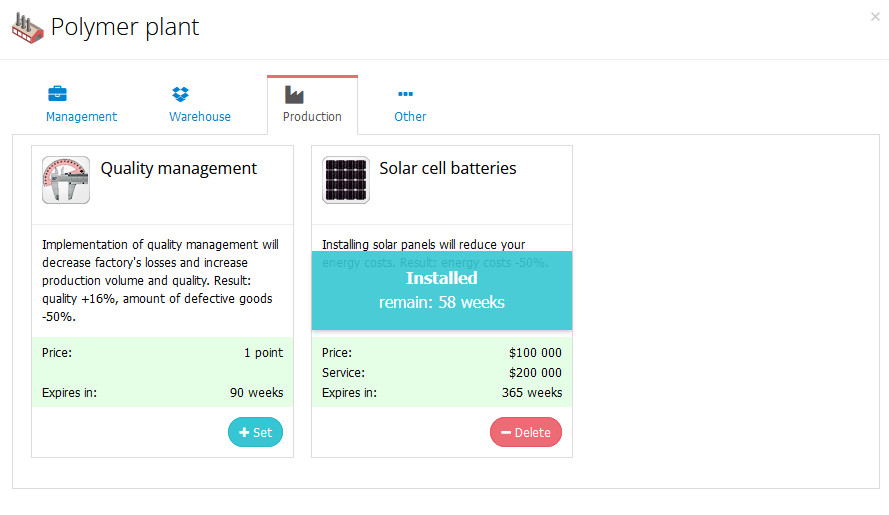
Activating boosters
Go to the main page of a subdivision. Click on the buttons at the top of the page.
Select the ones that would match your enterprise and would be effective in accelerating your business.
For example, if your qualification in management is quite high, but your store still cannot attract high traffic of customers (although the size of your store is good, the ad campaign is effective, but the store efficiency is still not 100%), so it is better to invest in convenient parking space rather than in installing EPR system.
Information on boosters is available by clicking on «Analytics » – «Reference» – «Business boosters» tab.
Reports
For reports of your company click on «My company» > «Reports». There are a lot of different types of reports. Financial reports, for instance, show the financial indicators of your company: revenues, expenses, profit, and indicators based on regions, subdivisions, products, etc. There are marketing, warehouse, and movement of goods reports as well as technology and mineral deposits reports. You can also see the reports of each subdivision of yours in the «Financial Report» tab.
A sample of a financial report of the store, which has been opened only a few game turns before:
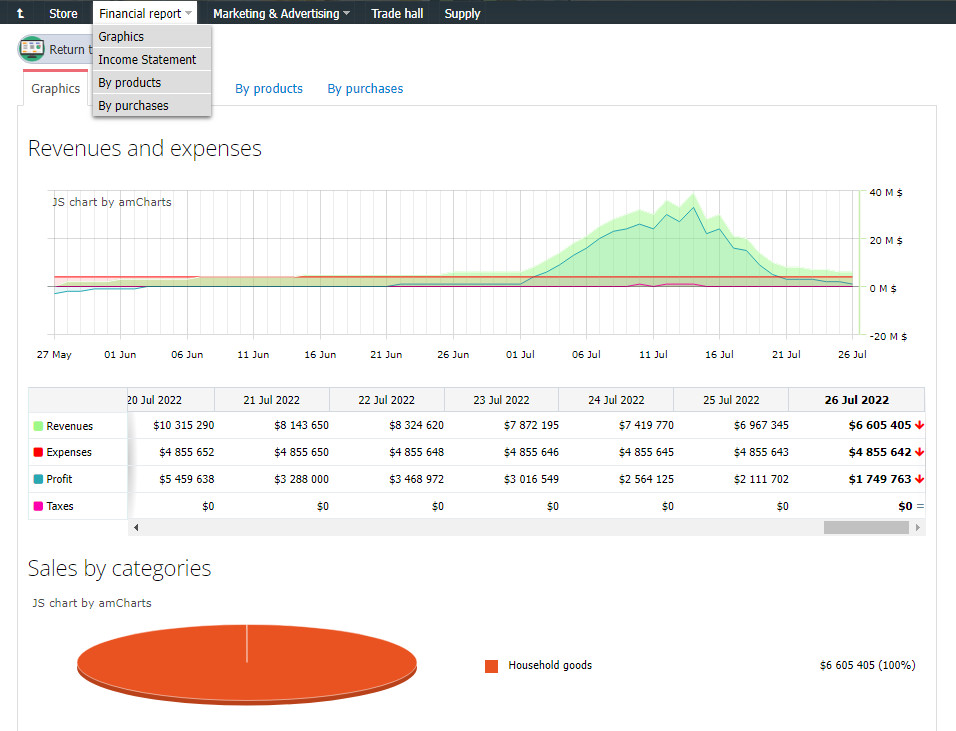
Your money balance is seen together with your name in the top corner of the homepage:

The most important financial indicators
Just like in real business, virtual companies have a lot of important indicators. But there is the most important that should be taken into consideration in the first place:
Money balance — it is your strategic recourse for opening new subdivisions, purchasing supplies, and equipment, paying for ad campaigns, salary to your employees, rent, etc. Bear in mind that your money resources are not unlimited and excessive investment in products may eventually tie up your money. Poorly calculated expansion or financing of expensive projects can lead the company to bankruptcy as well. All operations of a bankrupt company are
put on hold.
Profit — an indicator of your success, which helps you save money. This indicator is a difference between the revenues and expenses of your company.
Revenues and expenses — open several subdivisions that would generate stable profit. Try to decrease your expenses, while increasing your revenues. Do not expand your business without conducting a proper cost and revenue analysis.
A sample of income statement report:
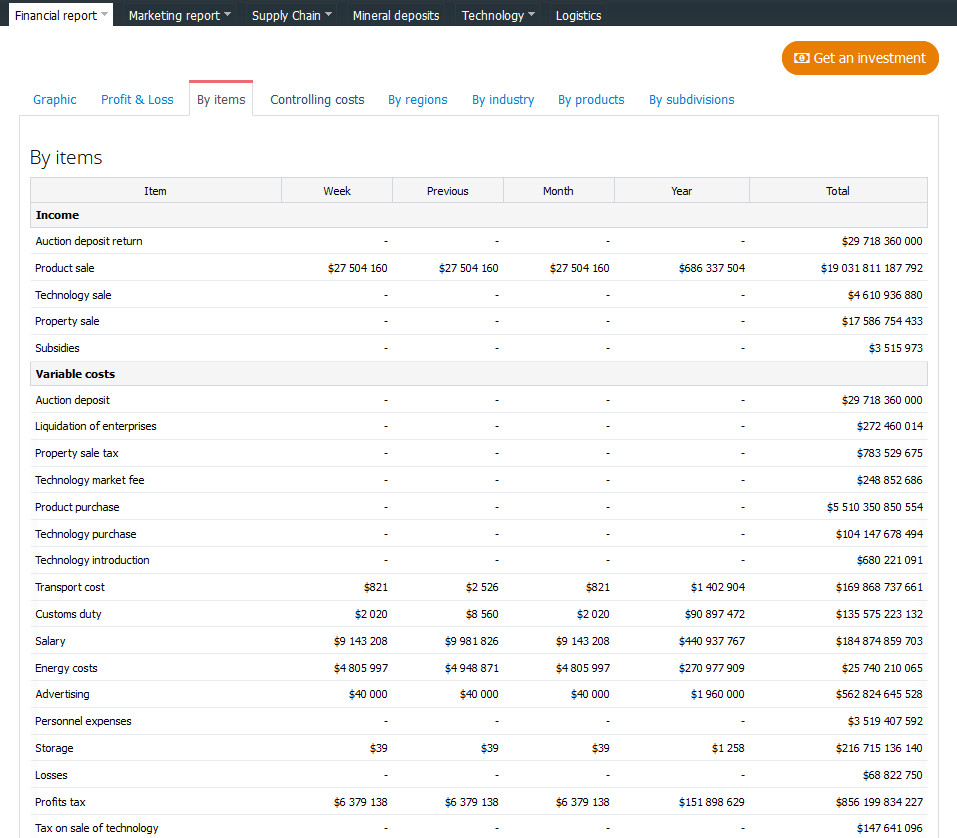
 Business games
Business games  Бизнес игры
Бизнес игры  Juegos de negocios
Juegos de negocios  Geschäftsspiele
Geschäftsspiele  Jogos de negócios
Jogos de negócios  Giochi aziendali
Giochi aziendali  Jeux d'entreprise
Jeux d'entreprise  Trò chơi kinh doanh
Trò chơi kinh doanh  ألعاب الأعمال
ألعاب الأعمال  Επιχειρηματικά παιχνίδια
Επιχειρηματικά παιχνίδια  Forretningsspil
Forretningsspil  משחקי עסקים
משחקי עסקים  商业游戏
商业游戏  비즈니스 게임
비즈니스 게임  Permainan perniagaan
Permainan perniagaan  Zakelijke spellen
Zakelijke spellen  Forretningsspill
Forretningsspill  Gry biznesowe
Gry biznesowe  Jocuri de afaceri
Jocuri de afaceri  İş oyunları
İş oyunları  Liiketoimintapelit
Liiketoimintapelit  Obchodní hry
Obchodní hry  Affärsspel
Affärsspel  ビジネスゲーム
ビジネスゲーム